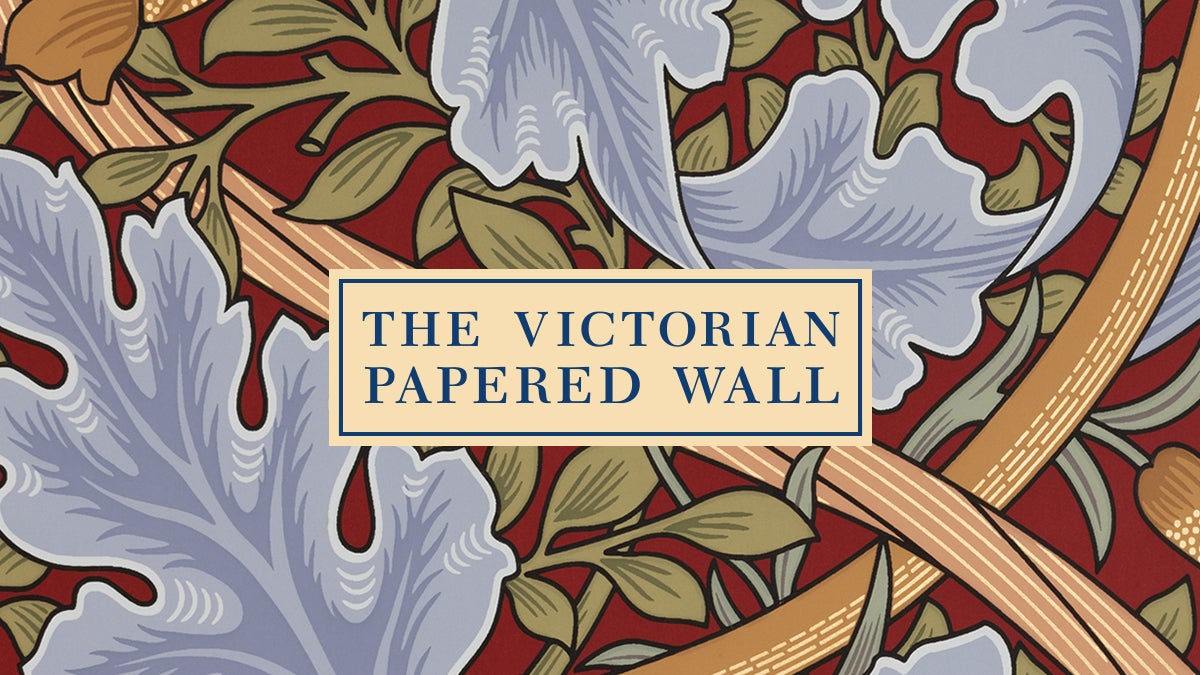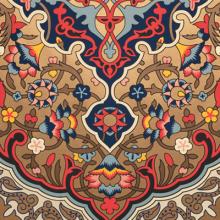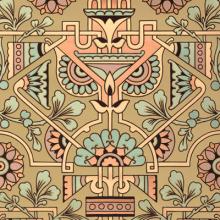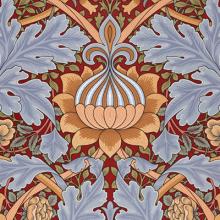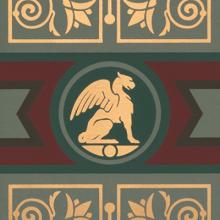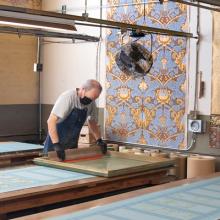The Victorian Papered Wall
Whatever you have in your rooms, think first of the walls, for they are that which makes your house and home. — William Morris (1834–96)
The Victorian Papered Wall
At the close of the fifteenth century, paper was manufactured throughout Europe. The use of printed or patterned sheets of paper as wall or ceiling decorations soon followed. Early practitioners began pasting sheets of paper together to form continuous rolls with repeating patterns in the late 1600s. Wallpaper styles varied throughout the centuries, with France and England the leading manufacturers. The use of continuous machine-made paper developed in the first several decades of the 1800s. Prior to the Industrial Revolution and even afterwards, particularly in France, artisans laboriously block-printed papers by hand. In 1839, the first wallpaper printing machine was patented by Potters & Ross in England. The United States also began making wallpapers during the second half of the nineteenth century.
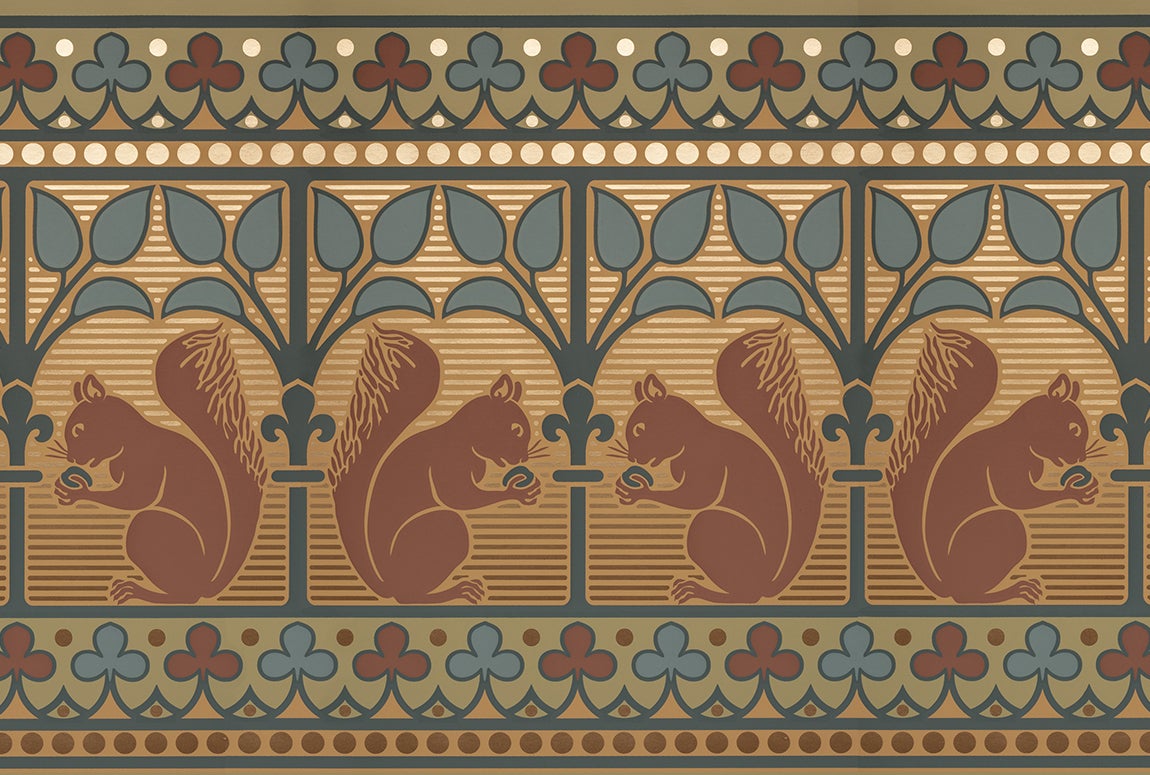 [image]
[image]
High Victorian Gothic squirrel frieze 2021
Bradbury & Bradbury Art Wallpapers
Benicia, California
L2021.1401.012
From its inception, wallpaper imitated luxurious materials, providing a more affordable alternative to tapestries, fabrics, mural paintings, and architectural elements. Crafted in repeating rolls and pasted to walls, wallpaper has an ephemeral quality unlike other decorative arts. Wallpaper reflects the design styles popular at the time, and in the late nineteenth century during the Victorian Era (1837–1901), walls richly came to life. English “design reformers,” who insisted on abstract, flat patterns, opposed fashionable French three-dimensional designs and grand-scale panoramic wallpapers. Meanwhile, the Aesthetic Movement, which burgeoned in England, emphasized artful interiors in the 1870s and ‘80s. Eclecticism prevailed—designers drew freely from world cultures and centuries past—including Japan, ancient Egypt, Greece, and Rome, as well as Persian and Gothic art. Owen Jones’ elaborately illustrated Grammar of Ornament (1856) and Christopher Dresser’s Principles of Decorative Design (1873) featured everything from Assyrian to Celtic artwork.
Wallpaper generated endless discussion in newspapers, periodicals, and books of the day. Tastemakers, such as the influential Englishman Charles Locke Eastlake (1836–1906), published strong opinions about which types of wallpapers were most appropriate in various rooms in the home. A three-part, vertical division of walls with a complementary dado, wall fill, and frieze was preferred. Intricately decorated ceiling papers and flickering metallic inks added to the Victorians’ love of embellishment. As Christopher Dresser advised: “If one part only can be decorated let that one part be the ceiling.” Leading designers, including Christian Herter (1839–83), Louis C. Tiffany (1848–1933), and William Morris (1834–96) all designed wallpapers during these decades.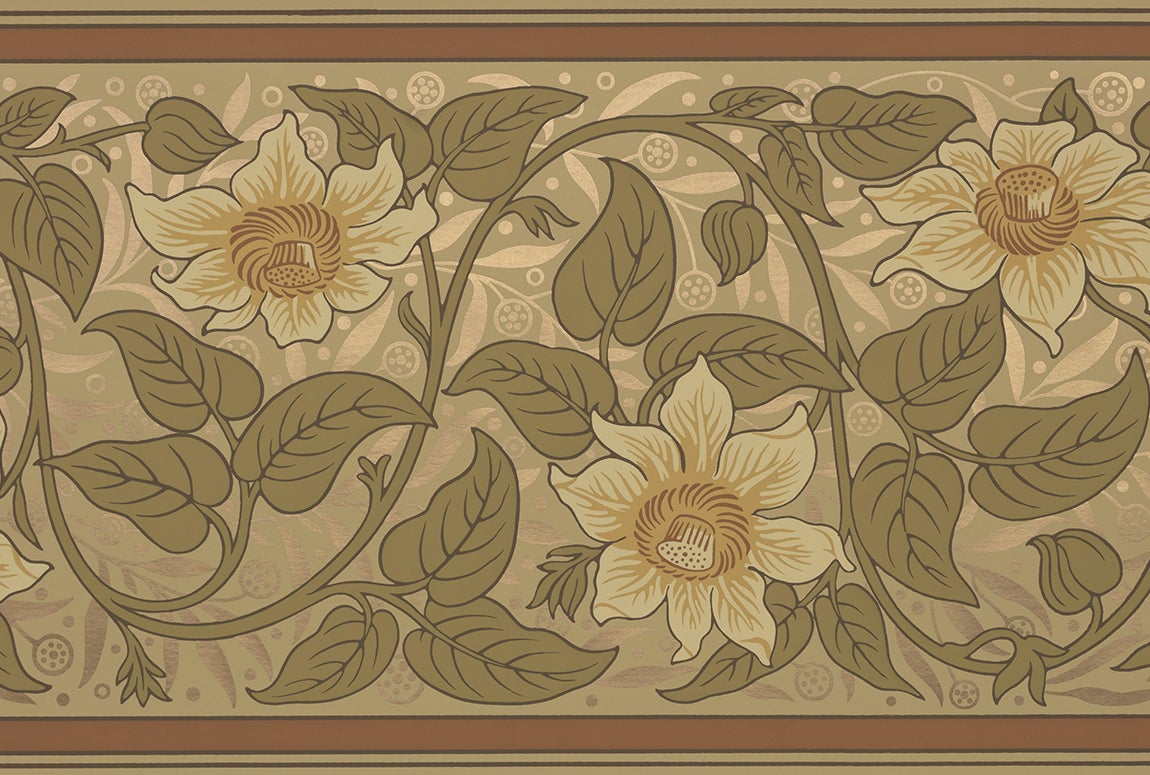
[image]
B. J. Talbert clematis frieze 2021
Bradbury & Bradbury Art Wallpapers
Benicia, California
L2021.1401.016
By the 1890s, wallpaper tastes began to change, and continued to do so throughout much of the twentieth century. This exhibition draws viewers into the late nineteenth century when a dazzling array of papers bedecked walls and ceilings.
Special thank you to Bradbury & Bradbury Art Wallpapers for making this exhibition possible; and to wallpaper hanger Heidi Wright Mead, C. P. for leading the wallpaper installation.
©2021 by San Francisco Airport Commission. All rights reserved.
